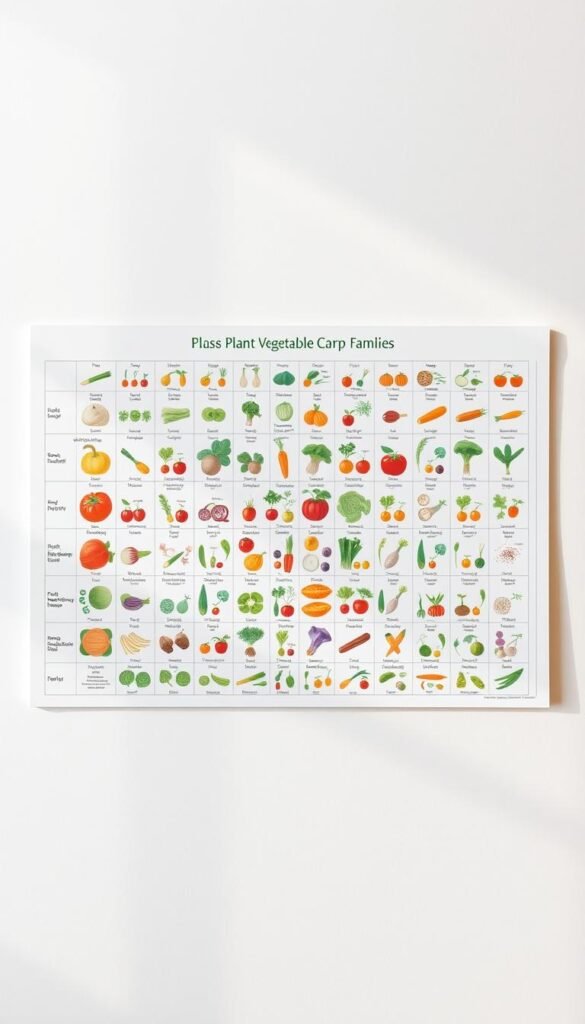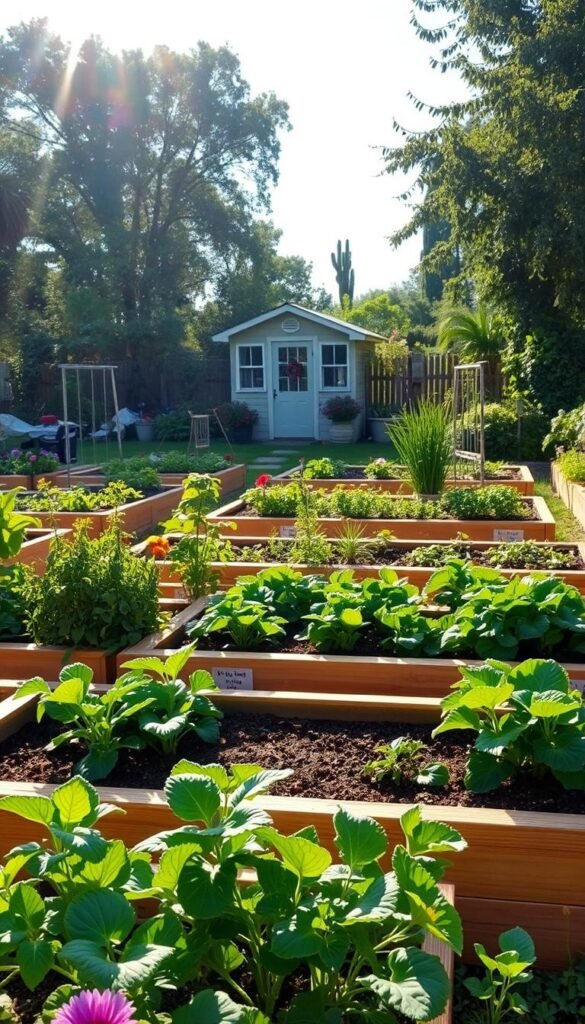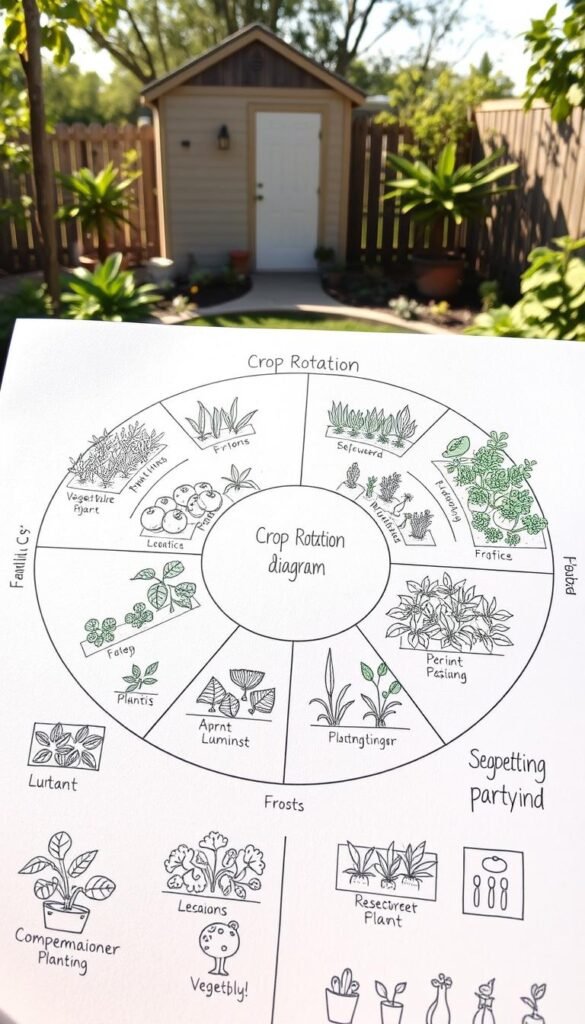Did you know your compact backyard plot can produce bigger yields while fighting pests naturally? The secret lies in changing what you plant where each season. This organic approach keeps your earth thriving and your plants resilient.
When you grow identical veggies in the same spot repeatedly, pests settle in like unwelcome houseguests. The soil becomes exhausted, forcing you to use synthetic fertilizers. But there’s a better way. By rotating plant families through different areas annually, you create a balanced ecosystem that works for you.
Different plants use nutrients uniquely. Leafy greens crave nitrogen, while root vegetables need more phosphorus. Rotating them lets the earth recover naturally. You’ll notice fewer bugs targeting your crops and healthier growth patterns over time.
This guide reveals practical strategies for organizing your planting areas, even if you’re working with raised beds or containers. You’ll learn how to group compatible plants, plan seasonal shifts, and maintain fertile ground without chemical additives. Let’s turn your modest growing space into a powerhouse of abundance!
Understanding the Benefits and Principles of Crop Rotation
Your garden’s health hinges on a natural cycle you control through strategic planting. Shifting where you grow specific vegetables annually creates an invisible shield against threats while boosting earth vitality. Let’s explore how this system works.
Managing Pests and Diseases Naturally
Harmful insects and pathogens memorize favorite dining spots. When you grow tomatoes in the same bed three years straight, you’re essentially setting a permanent buffet for hornworms. Rotating plant families starves these troublemakers by removing their preferred hosts.
Soil-borne diseases like fusarium wilt linger for years. By switching from peppers (nightshade family) to carrots (umbellifer family), you break their survival chain. One study found that rotating brassicas with legumes reduced clubroot infections by 72%.
“Rotation is nature’s reset button – it confuses pests and gives soil time to heal.”
Enhancing Soil Fertility and Nutrient Balance
Different plant groups use nutrients uniquely. Leafy greens guzzle nitrogen, while root vegetables mine phosphorus. Rotating heavy feeders with soil builders maintains equilibrium naturally.
| Plant Family | Nutrient Focus | Soil Impact |
|---|---|---|
| Legumes (beans) | Adds nitrogen | Enriches soil |
| Alliums (onions) | Requires potassium | Needs replenishment |
| Cucurbits (squash) | High nitrogen use | Depletes reserves |
Notice how beans act as natural fertilizers? Following them with nitrogen-loving corn creates a perfect partnership. This dance of give-and-take keeps your earth productive without synthetic additives.
Simple Crop Rotation Methods for Small Gardens

Unlock your garden’s hidden potential by grouping vegetables based on their biological relatives. This natural organization system helps you predict nutrient demands and pest risks before they become problems.
Recognizing Plant Families and Their Needs
Tomatoes and peppers share more than just vibrant colors – they’re nightshade cousins vulnerable to the same soil-borne diseases. Learn to spot these family ties. Squash and cucumbers form the gourd clan, always thirsty for nitrogen and prone to mildew attacks.
Beans and peas play a unique role as soil enrichers. Their roots host bacteria that convert air nitrogen into plant food. Follow them with hungry corn plants for a perfect nutrient handoff. Onions and garlic work differently, repelling pests while requiring minimal fertilizer.
Avoiding Soil Depletion With Strategic Rotation
Leafy greens like spinach drain nitrogen fast. Plant them where beans grew last season to leverage leftover nutrients. Heavy feeders like corn thrive after pea family crops, while root vegetables benefit from potassium-rich soil left by alliums.
Rotate nightshades (tomatoes, peppers) with mustard greens to disrupt wireworm cycles. Smart sequencing prevents your earth from becoming a buffet for persistent pests. For tight spaces, try interplanting compatible families in shifting zones each season.
Remember this pattern: nitrogen-fixers → heavy feeders → light feeders. This three-year rhythm keeps your soil balanced without chemical inputs. Your plants get what they need when they need it most.
Designing Your Garden Layout for Effective Rotation

Transform your growing area into an organized powerhouse using smart spatial planning. A well-thought-out layout acts like a roadmap for plant families, guiding them to fresh soil while keeping pests guessing.
Using Raised Beds and Multiple Zones
Four raised beds create a foolproof rotation system. Number them 1 through 4 and shift plant groups clockwise each year. This physical separation prevents soil mixing and simplifies tracking.
Research shows pest populations drop 60-80% when using dedicated beds for specific plant families. Tomatoes stay in Bed A this season? Next year, move them to Bed B while leafy greens take their place. The three-year cycle breaks disease cycles naturally.
Creative Approaches for Limited Spaces
No room for multiple beds? Try these space-smart solutions:
- Grow tomatoes in mobile containers you shift between sunny spots annually
- Plant garlic in flower borders and basil near patios as edible decor
- Partner with neighbors using a shared planting plan – you grow squash, they cultivate beans
For urban growers, square-foot garden techniques work wonders. Divide small plots into sections that rotate yearly. Even window boxes can host rotating herb varieties that confuse pests.
Remember: The goal is changing plant locations every 3-4 years. Whether you’re working with acres or fire escapes, consistent movement keeps your green friends thriving.
Implementing a Practical Crop Rotation Plan

Ready to turn your garden into a well-oiled machine? A structured approach keeps your plants thriving and reduces guesswork. Let’s break down how to execute a system that practically runs itself.
Mastering the Four-Zone Cycle
Divide your space into four dedicated areas. Here’s the golden pattern:
| Bed | Plant Group | Key Role |
|---|---|---|
| 1 | Leafy greens & brassicas | Nitrogen consumers |
| 2 | Beans/peas | Soil enrichers |
| 3 | Tomatoes/peppers | Heavy feeders |
| 4 | Roots & squash | Soil stabilizers |
Shift groups clockwise each year. This four-year cycle prevents pests from settling in and lets soil nutrients rebound naturally. Pro tip: Mark beds with weatherproof labels to avoid mix-ups.
Tracking Progress and Tweaking Tactics
Keep a garden journal – digital or handwritten – noting where you plant each family. Snap seasonal photos to visualize changes over time. Stuck with persistent aphids? Your records will reveal patterns needing adjustment.
When integrating cover crops like clover, remember they belong to the legume family. Factor them into your rotation as green manure. For perennial herbs or berries, designate permanent spots away from your main beds.
“My sketchbook holds seven years of planting maps – it’s my secret weapon against soil fatigue.”
If squash unexpectedly fails in Bed 4, swap in radishes instead. Flexibility matters. Need more guidance? Explore effective rotation strategies tailored for compact spaces.
Final Insights for a Bountiful and Pest-Free Garden
Your thriving garden starts with rich soil and smart choices. While rotating plant families disrupts pests, the real magic happens underground. Feed your earth with compost and aged manure instead of synthetic fertilizers – these organic powerhouses deliver all 13 essential minerals plants crave, unlike store-bought 10-10-10 blends that miss 10 nutrients.
Focus on space-saving stars like tomatoes, peppers, and pole beans that pack big harvests into tight quarters. Ditch space-hogging potatoes and corn unless you’re farming acres. For container growers, try alternative rotation strategies using movable planters that refresh soil conditions annually.
Keep records simple – a notebook sketch showing where you planted each family works wonders. Remember: healthy soil grows resilient plants. Pair smart rotations with regular organic matter additions, and your garden becomes a self-sustaining ecosystem that outsmarts pests naturally.






